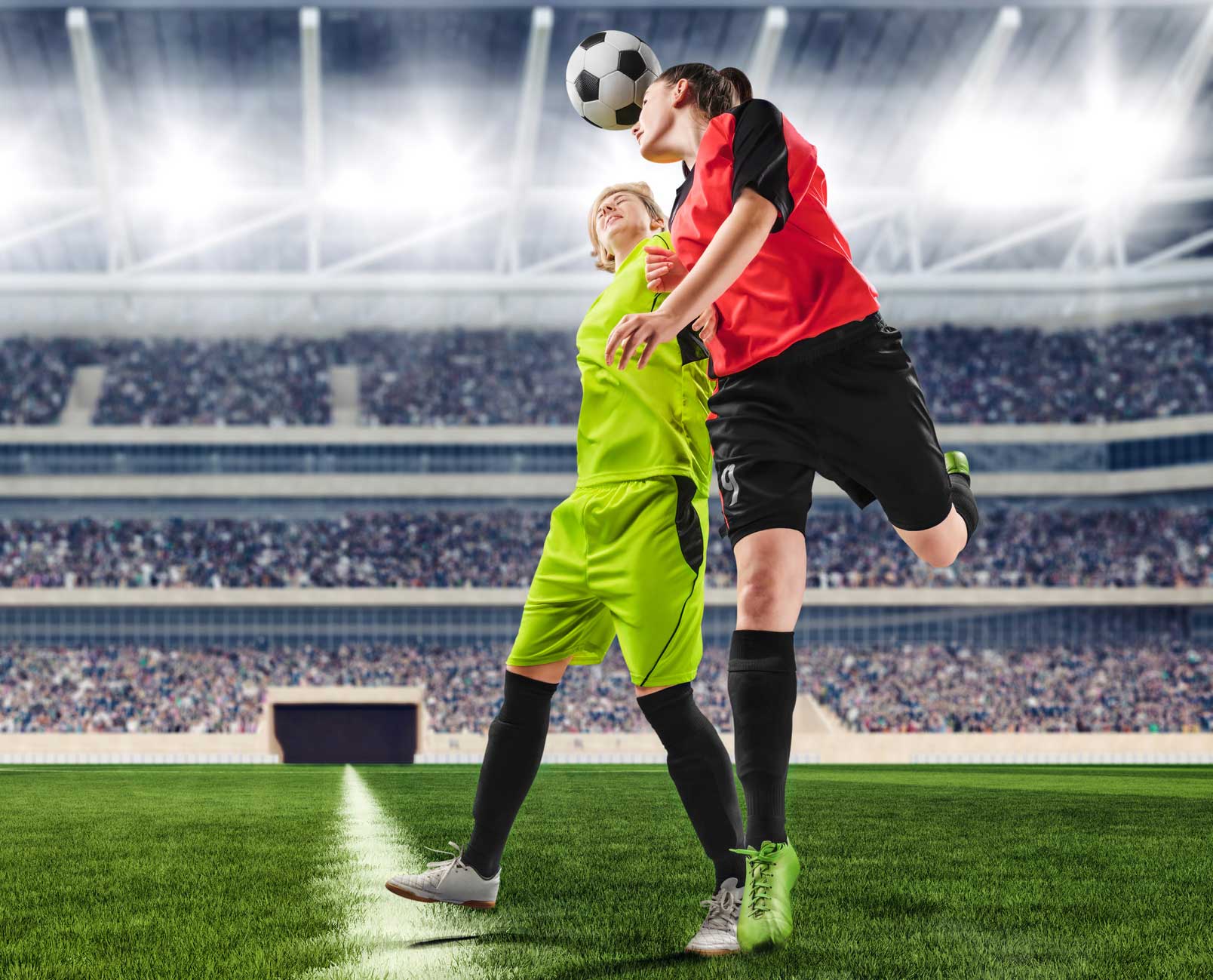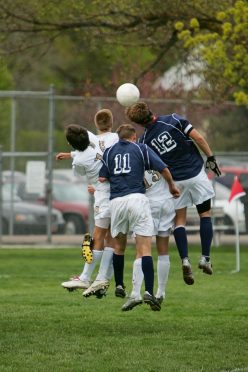Strapping on shin guards and stretching prevents some injuries in soccer, a sport females are twice as likely to suffer a concussion and less likely than males to be pulled from a game for medical observation.
A national survey of high school athletes confirms what many have long known – soccer poses more of a concussion risk to women than men.
“It was not surprising to me. Girls’ soccer has long been the number one sport associated with concussions in females,” noted Dr. Stephanie Alessi-LaRosa, associate director of the Hartford HealthCare Ayer Neuroscience Institute Sports Neurology Program and program director of its new sports neurology fellowship.
In the study, published recently in the Journal of the American Medical Society, researchers analyzed data from Michigan high school players – approximately 43,000 males and 39,000 females – over three years. They found the chance of concussion for females was 1.88 times higher than males.
Dr. Alessi-LaRosa says differences in body mechanics and the way both sexes play the sport contribute to the results.
“Females have thinner necks, for one thing. This is a factor frequently left out of these discussions,” she said noting that thin necks lack the strength to cushion the blow to the brain when heading a ball.
She also agreed with the researchers ’ revelation that females are less likely to be removed from a game because their concussions are more likely the result of heading while males are more often injured physically crashing into another player.
“If the mechanism causing injury is not clear-cut, coaches are less likely to recognize a potential concussion in play,” Dr. Alessi-LaRosa said.
She suggested coaches watch females after heading the ball for signs of concussion such as the player:
- Shaking her head.
- Holding her head.
- Seeming slow to react to the play around her.
“That would be a good clinical observation to pull the athlete, ask more questions and check in with her. She may not pull herself out. Many athletes will try to play through headaches or symptoms, which is a bad idea,” she said.
Signs of concussion warranting emergency care include:
- Loss of consciousness.
- Decreased responsiveness.
- Repeated vomiting.
- Balance issues.
- Convulsions or seizures.
- Unequal pupils.
- Slurred speech.
- Weakness or numbness in the arms or legs.
Heading in general should be done carefully after proper training, and even limited in high school, Dr. Alessi-LaRosa said.
“Much like tackle football, heading the ball is not necessary prior to high school. Exposure to head contact at the high school level should also be limited,” she said. “I am aware teams do ‘heading drills,’ but heading should be a last resort at the high school level and completely avoided at the youth level.”
Because it can be challenging to know when to pull a player from a game for observation. Dr. Alessi-LaRosa suggested teams have athletic trainers present.
“Their presence increases recognition – and improves outcomes – significantly compared to competitions at which no athletic trainer is present,” she said. “I encourage parents to ask teams and coaches about athletic trainer presence at any level for any contact sport because it makes such a difference.”



